Flashback to the 2011 ESPN MLB Franchise Draft to Review Picks

A look back at what has happened in the seven years since ESPN held an MLB Franchise Draft done by a group of baseball experts.
Seven years ago, ESPN invited a group of 30 “resident baseball experts” to participate in ESPN’s MLB Franchise Draft. The concept was simple: if you were starting a franchise and you could pick any player in professional baseball, who would be your franchise player?
In some ways, seven years in baseball can seem like an eternity. The best position player in baseball seven years ago was Jacoby Ellsbury, worth 8.3 WAR according to Baseball-Reference. Ellsbury hasn’t been worth any WAR this year because he hasn’t played at all.
Also in the top five among position players back in 2011 were Jose Bautista, Dustin Pedroia and Ryan Braun. They are all just shells of their former selves these days. Of course, the number three guy in Baseball-Reference WAR was Matt Kemp, which just proves that sometimes what’s old is new again.
Outside of baseball, seven years ago Adele was dominating the charts around this time with her song “Rolling in the Deep.” LeBron James was the best player in the NBA, but his Miami Heat lost to the Dallas Mavericks in the finals. Oprah Winfrey had just hosted the final episode of her daytime program. At the box office, Green Lantern was the superhero flavor of the month.
For the ESPN MLB Franchise Draft, with the 30 “resident baseball experts” picking players, the contract status of each player did not matter. The experts were free to pick the guy they wanted, regardless of how much that player was making. Minor league players were also available.
This is always good for a passionate debate. Do you take a pitcher as your franchise player, despite the greater likelihood of injury? Do you take an established guy who may be at the peak of his production or a young guy who is more likely to improve? How important are the “up the middle” positions?
Now that seven years have passed, it seems as good a time as any to revisit this MLB Franchise Draft. Who were the hits and misses? Which participants were most prescient in their picks? Who picked the biggest dud?
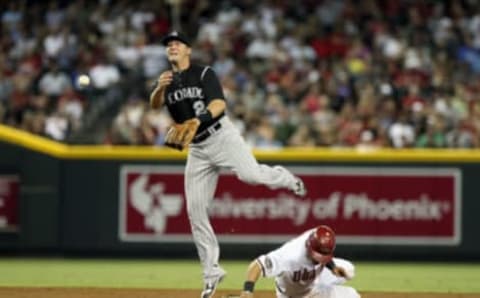
#1. Troy Tulowitzki, SS, Colorado Rockies (picked by Karl Ravech)
Age: 26, MLB: 6th season
Before the draft chat got going, this question was asked: “Which would you rather draft with the No. 1 overall pick?”
The results from chat observers:
69%–All-Star position player
31%–No. 1 starting pitcher
A few names thrown out by fans following along at home were Felix Hernandez, Joey Votto, Andrew McCutchen and Robinson Cano. Jim Bowden was a frequent commenter. He said he would take a proven number one starter in this type of draft. Karl Ravech, with the first overall pick, took Colorado Rockies shortstop Troy Tulowitzki.
About his pick, Ravech said taking Tulowitzki with the first pick was a no-brainer. Tulowitzki was young and incredibly productive for a shortstop and, in Ravech’s view, only going to get better. There was plenty of agreement with this pick. Jim Bowden said, “Tulo was #1 on my board. Can hit, hit for power, range to both sides plus arm . . . make up, character and leadership off the board.”
After the pick, this chat poll question was asked: “Do you agree with Karl that Troy Tulowitzki was the right choice at No.1?”
55%–Yes
45%–No
Dan Szymborki had 5-year ZiPS projections for most picks, along with a comment. About this pick, he mentioned that Tulowitzki hits like a star first baseman but plays Gold Glove defense at shortstop.
ZiPS 5-year projected WAR: 26.4
ZiPs 5-year actual WAR: 17.4 (Baseball-Reference)
What happened: At the time of this draft, Tulowitzki had been a 6 to 7 WAR player in three of the previous four seasons and was on his way to another 6 WAR season in 2011. To reach his five-year WAR projection, Tulo would need to average 5.3 WAR per season for five seasons. He had two seasons in that range, but injuries limited him to 47 games in 2012 and 91 games in 2014.
Tulowitzki was traded to the Toronto Blue Jays during the 2015 season and hasn’t come close to his previous level of play since. He played 66 games last year and hasn’t played at all this year. Of the 30 players taken in the Franchise Player Draft, Tulowitzki ranked 15th in five-year WAR post draft.
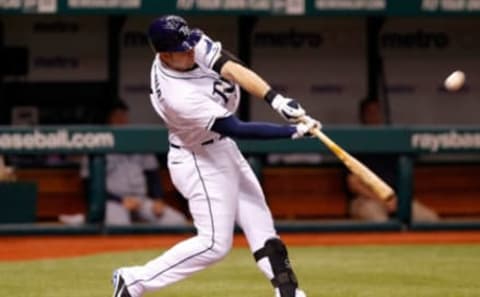
#2. Evan Longoria, 3B, Tampa Bay Rays (picked by Keith Law)
Age: 24, MLB: 4th season
As the chat poll showed, the majority felt Tulowitzki was the right choice at number one. With him off the board, it gets a little tougher. Keith Law had the second pick and took young third baseman Evan Longoria, who was a 7 to 8 WAR player from 2009 to 2011. He had already been the AL Rookie of the Year, a two-time Gold Glove winner and a three-time all-star.
Law’s reasoning for taking Longoria here: “Contributes substantially on both sides of the ball and is about to enter his peak years as a hitter.” All of that was true. Longoria had a good bat and a good glove and was 25 years old. His future looked bright.
Dan Szymborski commented, “ Like Tulowitzki, Longoria’s likely to see a large boost to his batting line by the end of the year. With 130 doubles already, Longoria stands a good shot at finishing in the top 20 in career two-baggers.” Note: Evan Longoria is now 32 years old and has 354 career doubles, which is tied for 283rd all-time. He needs 231 doubles to tie Rafael Palmeiro for 20th in career two-baggers.
David Schoenfield, who had the next pick, said he would have taken either Tulowitzki or Longoria if either had fallen to him. He had Tulo and Longo as the clear-cut top two guys, but did mention that the only concern were “little nagging injuries.” Bowden disagreed with this pick, saying he would have taken a number one starter.
ZiPS 5-year projected WAR: 28.7
ZiPs 5-year actual WAR: 19.2 (Baseball-Reference)
What happened: Longoria had a hamstring injury in 2012 that limited him to 74 games. He was worth 2.5 WAR in roughly half a season. He bounced back strong in 2013 (6.2 WAR), but was a 3 to 4 WAR player from 2014 to 2017 instead of the 7 to 8 WAR guy he’d been previously. This year, he’s barely above replacement level. Longoria had the second-best projected 5-year ZiPS and was the 13th-most valuable player over the ensuing five years.
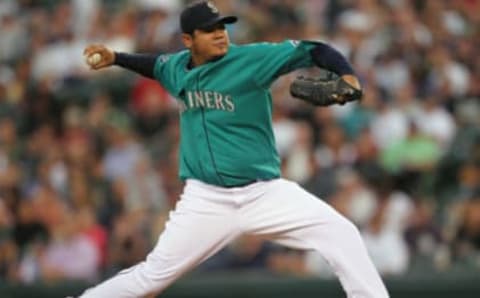
#3. Felix Hernandez, RHP, Seattle Mariners (picked by David Schoenfield)
Age: 25, MLB: 7th season
David Schoenfield commented that he was considering Ryan Braun, but thought the number three pick was too high for a left fielder. He went with King Felix, while acknowledging the risk of taking a pitcher. He said, “Yes, I know. I can’t take a pitcher this early. They get hurt. They’re risky. They can be inconsistent.”
He also imagined a real-life scenario in which the Mariners were offered another player for Felix and decided they wouldn’t trade him for the players still on the board. He continued, “See, not only is Hernandez one of baseball’s best starters, he’s still young and one of the most durable workhorses in the league, alongside Roy Halladay and CC Sabathia.”
There was plenty of disagreement with this pick, primarily because Hernandez is a pitcher. One commenter said Ryan Braun or Joey Votto should have been taken with the number three pick. Bowden, on the other hand, really liked this pick, saying that King Felix had the best stuff in baseball.
Dan Szymborski added, “Anyone who says there will never be another 300-game winner should remember that King Felix just turned 25. He’s improved his strikeout rate for the fourth straight year and has a health record that few pitchers can match.” Note: Felix continued to have a good health record until 2016. He’s 32 years old and has 167 career wins.
ZiPS 5-year projected WAR: 27.9
ZiPs 5-year actual WAR: 22.9 (Baseball-Reference)
What happened: At the time of this pick in 2011, Felix Hernandez had finished second and first in AL Cy Young voting the previous two years. He was an all-star for the second time in 2011 and would make the all-star team in each of the next four years while averaging 218 innings per season with a 2.91 ERA.
Felix was the third pick in this draft and was sixth among the drafted players in WAR over the next five seasons. In this hypothetical world, he would have given Schoenfield a top starter for 4 ½ seasons before injuries hit. His downward slide began in 2016 with a 3.82 ERA in 153.3 innings. He’s been even worse over the last two seasons and currently has a 5.10 ERA (4.58 FIP) in his first 17 starts this year.
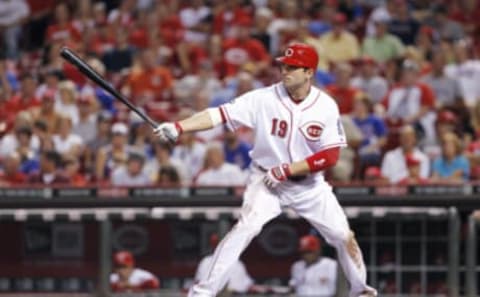
#4. Joey Votto, 1B, Cincinnati Reds (picked by Dave Cameron)
Age: 27, MLB: 5th season
Fangraphs’ Dave Cameron had the next pick and went with the OBP-machine, Joey Votto. He mentioned that Votto was the best player in the National League the year before and that he “has built off his MVP award by dramatically increasing his walk totals while simultaneously cutting his strikeout rate, and he’s now essentially impossible to get out. Just 27, Votto is the safest best of any player in baseball to continue producing at an elite offensive level.”
Jim Bowden disagreed with this pick, saying, “Fantasy drafts you take the bats . . . amateur drafts you take the bats . . . franchise drafts with proven #1 starters . . . you take the aces . . . you can get bats in the rest of the draft . . . can only get #1 starters early.”
With his many comments, Jim Bowden is quickly establishing himself as “that guy.” You know “that guy.” He’s the one in the fantasy baseball chat room who has something to say about every pick and often very passionately. Sometimes he’s right; sometimes he’s spectacularly wrong. In my longtime fantasy league, our “that guy” is J.B.
David Schoenfield agreed with Bowden. He didn’t think first base was a premium position and couldn’t pass up King Felix for Joey Votto. Dan Szymborski liked the Votto pick, even suggesting that Votto had succeeded Albert Pujols as the NL’s best first baseman (which he had; good call, Dan).
ZiPS 5-year projected WAR: 25.9
ZiPs 5-year actual WAR: 26.1 (Baseball-Reference)
What happened: Votto was coming off his 7-WAR MVP season in 2010 when he was taken with the fourth pick here. He would go on to be worth 6.6 WAR this year (2011). In 2012, he only played 111 games but was still close to a 6 WAR player. He followed that up with another great season in 2013 (6.6 WAR).
The only thing that slowed Votto down was an injury that limited him to 62 games in 2014. He’s played at least 158 games per season since and continues to rake (3.0 WAR so far this year), although his power numbers are down this season. He was the fourth player taken and was worth the fifth-most WAR among the drafted players in the five years after this Franchise Player Draft. Good pick by Dave Cameron!
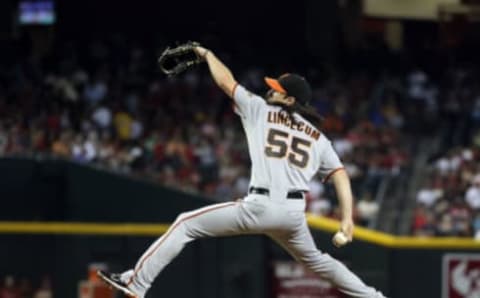
#5. Tim Lincecum, RHP, San Francisco Giants (picked by Amy K. Nelson)
Age: 26, MLB: 5th season
Before her pick, Nelson commented that she had seen plenty of mentions of Ryan Braun. She also saw suggestions for Jon Lester, Jose Reyes, Joe Mauer and Buster Posey. She took Tim Lincecum, who had already won two Cy Young Awards and was about to make the all-star team for the fourth straight year. He was 27 years old and would finish the 2011 season with a 2.98 ERA in 1028 career innings.
Nelson’s comment on her choice of Lincecum: “One of the best pitchers in the game, Lincecum not only has two Cy Youngs and a World Series title, but unlike other pitchers, Lincecum’s unusual delivery and mechanics actually seem to have benefitted him and kept him from breaking down. Plus, who wouldn’t want to build a franchise around someone whose nickname is ‘The Freak’?”
Jim Bowden loved this pick, calling Lincecum the second best starter after King Felix. He also threw out a misogynistic joke, saying, “I think Amy wants to date ‘The Freak’”. Ohh, Jim. Singling out one of the female resident baseball experts by suggesting she wants to date the guy she’s picking for her franchise player is not a good look, my man.
Amy responded later with, “Thanks and for the record, since Jim was so curious, no dating, of freaks, or otherwise.” She was kinder than she needed to be.
Bowden doubled-down on his Lincecum love when he said, “Lincecum beats Halladay, Carpenter, Hudson, Lee . . . just sayin’.”
Dan Szymborski noted that Lincecum’s fastball was already declining but still liked him as the easy next pitcher to take after King Felix was off the board. He noted, “The Freak’s won the last three NL strikeout crowns, and unless his arm comes flying off his shoulder (how is it staying on?) he’ll be an ace for a long time yet.”
ZiPS 5-year projected WAR: 26.0
ZiPs 5-year actual WAR: -4.3 (Baseball-Reference)
What happened: Lincecum finished the 2011 season strong. He was worth 3.7 WAR that year. Then his career went up in smoke. He was awful in 2012 (5.18 ERA, -1.7 WAR) and continued to be awful for the next three years. After putting up a 2.98 ERA in his first five seasons, he had a 4.94 ERA over his next five seasons. He hasn’t pitched in the big leagues since 2016. He was easily the worst pick of this draft.
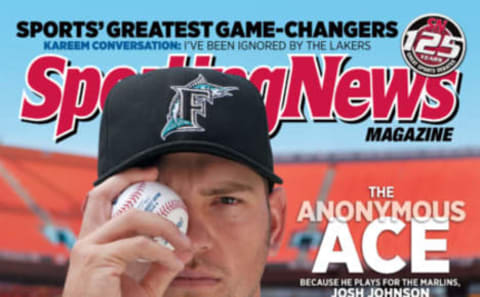
#6. Josh Johnson, RHP, Florida Marlins (picked by Chris Singleton)
Age: 27, MLB: 7th season
After the Lincecum pick, a chat poll asked, “Who has been the best pick among the top five?”
35%–Troy Tulowitzki
19%–Felix Hernandez
17%–Evan Longoria
16%–Joey Votto
13%–Tim Lincecum
That’s very close to the order the players were taken, with the only difference being Felix Hernandez ahead of Evan Longoria.
Chris Singleton was next up. He was one of seven former MLB players taking part in this Franchise Player Draft. He chose right-handed pitcher Josh Johnson, who led the NL with a 2.30 ERA the previous season and had a 1.64 ERA at the time of this draft, but was out with an injury. He thought Johnson was starting to figure it out “so that he can consistently go out and dominate even when he doesn’t have his best stuff.”
Singleton also said, “He has shown the resilience to battle back from serious arm injury to become one of the most coveted arms in all of baseball.” He also liked that Johnson was six-foot-seven and hoped Johnson would lead his fictional pitching staff for the next 6-7 years.
Dan Szymborski’s ZiPS projections had some impressive names among Johnson’s statistical comps: Roy Oswalt, Bert Blyleven, Greg Maddux and Roy Halladay. Szymborski noted that Johnson’s projected WAR from ZiPS takes a hit because of the pitcher’s previous Tommy John surgery.
Jim Bowden said Johnson was a true number one but was concerned about the injuries. He didn’t ask if Chris Singleton wanted to date Josh Johnson.
ZiPS 5-year projected WAR: 20.6
ZiPs 5-year actual WAR: 2.4 (Baseball-Reference)
What happened: Johnson didn’t pitch again in 2011. He bounced back with 191.3 innings and a 3.81 ERA in 2012, but only had one more very ugly season left in him. His final year in the big leagues was 2013 when he had a 6.20 ERA in 81.3 innings. This wasn’t quite as bad as the Lincecum pick, but it was close. Johnson was 28th among these 30 players in WAR over the ensuing five years.
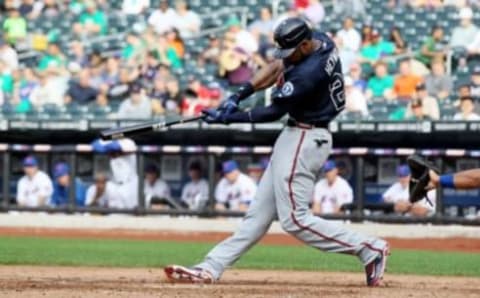
#7. Jason Heyward, RF, Atlanta Braves (picked by Jorge Arangure, Jr.)
Age: 21, MLB: 2nd season
Right before this pick, a fan named Sean commented, “Why has no one picked Heyward? He is younger then [sic] all of these picks and was the voted starter for the national league [sic] as a rookie!” Not long after the words appeared on the screen, Jorge Arangure, Jr. drafted Heyward with the seventh pick.
Heyward had just one full season under his belt at this point but it had been a very good year. He was worth 6.4 WAR as a rookie. Arangure said after his pick, “Well, I’m taking the young guy who will be my right fielder for the next 15 years. The guy with the gifted combination of power and on-base percentage. Laugh at me now, but talk to me in 10 years when Pujols is retired and my guy is still putting up MVP numbers.”
Eric Karabell liked this pick and admitted he hoped Heyward would drop to him (at pick number nine). Jim Bowden was surprised that Heyward was taken over Ryan Braun and Bryce Harper. Dan Szymborski pointed out that Heyward’s prime was still in the future and said, “…he is one of the likely contenders for best player of the 2010s.”
ZiPS 5-year projected WAR: 24.3
ZiPs 5-year actual WAR: 22.7 (Baseball-Reference)
What happened: Heyward struggled with a .227/.319/.389 batting line in 2011 (the year of this Franchise Player Draft), but had some good years with the bat ahead of him. He’s also been so good on defense that he still provides value even when he’s not hitting. In the five years after this draft, he came close to his ZiPS five-year projection. He was the seventh pick of this draft and provided the ninth-most WAR over the next five seasons.

#8. Albert Pujols, 1B, St. Louis Cardinals (picked by Enrique Rojas)
Age: 31, MLB: 11th season
Rojas loved that Pujols fell to him at the number eight pick, calling him the most complete right-handed batter since Hank Aaron. Pujols’ age didn’t bother him. He said of his pick, “At 31 years old, he still has enough fire left to make a difference between merely competing and winning it all for the next six years…”
In response to a chat question regarding Pujols’ down year to that point, Jim Bowden said he wasn’t worried about Pujols bat speed. He compared Pujols to Babe Ruth and called him the “best hitter and power hitter in baseball.”
Szymborski pointed out that Pujols was having the worst year of his career but ZiPS was projecting him to hit much better than he was hitting at the time. His projected five-year WAR is in the same ballpark as most of the players taken in this draft.
A chat poll asked: “What do you think about Albert Pujols draft position at No. 8?”
50%–Too high
20%–Too low
29%–Just right
ZiPS 5-year projected WAR: 25.3
ZiPs 5-year actual WAR: 14.6 (Baseball-Reference)
What happened: It just so happens that this Franchise Player Draft took place in June of 2011. That was Pujols’ last season with the St. Louis Cardinals. He finished the year with 5.3 WAR, a total he’s never reached in a season with the Los Angeles Angels. He had a 4.8 WAR season in 2012 and a 4 WAR season in 2014. He also had a 1.5 WAR season in 2013 and a 1.3 WAR season in 2016. He was the eighth pick in this draft and was 20th in WAR among these players over the next five years.
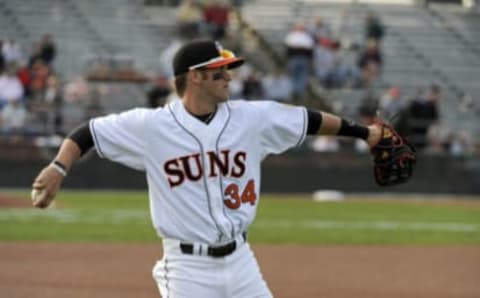
#9. Bryce Harper, OF, Washington Nationals (picked by Eric Karabell)
Age: 18, MLB: None (still in A ball)
Before making his pick, Karabel commented that he’d have taken Pujols if Pujols had made it to him. He also said he’d like to take an ace. David Schoenfield was urging Karabell to take David Price or Justin Verlander or Roy Halladay. Commenter Jon said, “If Braun doesn’t go now, ur going to force me to take a nap!” That’s a strange threat, but whatever.
Ignoring all of the suggestions, Karabel went with the phenom, Bryce Harper. He acknowledged that the 18-year-old Harper might be two years away from the big leagues, but he loved the power potential and said, “My franchise can mold him and enjoy his entire career, assuming we pay for it. The power potential is huge, his arm will play well in right field, and I don’t mind a little attitude with my franchise player.”
He added, “Harper is a once-in-a-generation, multi-faceted talent, and well worth the investment.” He also considered taking Hanley Ramirez with this pick but didn’t like Hanley’s defense.
Bowden chimed in, of course. He said, “Bryce Harper is a Dallas Cowboys and Los Angeles Lakers fan!…for that reason only it was a great selection! I love Harper’s make-up. He’s the only amateur free agent I ever projected to hit 50 home runs someday. Great pick…” He also said Harper was the best prospect in baseball over Mike Trout.
Szymborski’s ZiPS didn’t have a projection because Harper had so little professional playing time. Dan mentioned that Harper was crushing the ball against much older competition. That year, the 18-year-old Harper hit .297/.392/.501 combined in A-ball and Double-A, with 17 homers and 26 steals in 109 games.
A chat poll asked: What do you think about Bryce Harper’s draft position at No. 9?
68%–Too high
8%–Too low
24%–Just right
Five-year ZiPS projected WAR: n/a
ZiPs 5-year actual WAR: 21.5 (Baseball-Reference)
What happened: Karabell thought it would be two years before Harper made it to the big leagues, but Harper arrived a year early. He had a 5.2 WAR season as a rookie in 2012 and followed it up with a 3.7 WAR season (in 118 games) in his second year, when he was still just 20 years old. Then came the very disappointing 2014 season (1.0 WAR in 100 games), followed by the Bryce Harper explosion in 2015.
Harper’s 2015 season is the season everyone was waiting for. He hit .330/.469/.649, with a league-leading 118 runs and tops-in-the-NL 42 home runs. He was an all-star for the third time, a Silver Slugger winner and the NL MVP. This was peak Bryce Harper.
Unfortunately for Nationals fans, Harper hasn’t come close to that production since. He had a 1.5 WAR season in 2016 and was worth 4.7 WAR last year, in 111 games. We’re nearing the halfway point of this season and he’s hitting .219/.361/.480 with below-average defense. Still, as far as this pick is concerned, not bad. Harper was the ninth player taken and was 10th in value among these players over the ensuing five seasons.
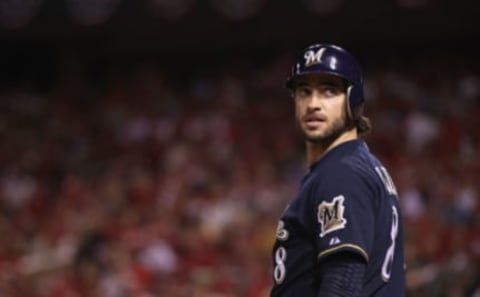
#10. Ryan Braun, LF, Milwaukee Brewers (picked by Mark Simon)
Age: 27, MLB: 5th season
Leading up to this selection, there were mentions of Robinson Cano being a good pick. Jim Bowden was going on about getting a top starting pitcher. Eric Karabell, who’d just taken Harper, acknowledged that Braun would have been the safe pick (or even David Price).
With the 10th pick, Mark Simon took Ryan Braun. He mentioned Braun’s consistency, his excellence as a hitter and his smart base running. He didn’t seem worried about Braun’s defense, which was a negative for many. He also pointed out that Braun was one of four players, along with Joe DiMaggio, Frank Robinson and Albert Pujols, to hit at least 25 home runs and slug .500 in each of their first four seasons.
At the time of this Franchise Player Draft, Braun was in the midst of his MVP season that was worth 7.7 WAR. He followed that up with a 6.9 WAR season in 2012, when he hit .319/.391/.595 and led the league with 108 runs scored and 41 dingers. This looked like a terrific pick.
Five-year ZiPS projected WAR: n/a
ZiPs 5-year actual WAR: 18.0 (Baseball-Reference)
What happened: In the summer of 2013, Braun was suspended for PED use. He had been a 6 to 7 WAR player before 2013. Through that season, his career batting marks were .312/.374/.564 with an average of 30 HR in 135 games per season. Since then, he’s hit .278/.342/.490 with an average of 20 HR in 115 games per season.
Using wRC+, which adjusts for league and ballpark, Braun went from being 48 percent above average on offense to 20 percent above average (148 wRC+ to 120 wRC+). That’s not to say his previous success was all due to PED use. Braun put up the first set of numbers when he was 23 to 28 years old and the second set from ages 29 to 34. Age-related decline would be a factor.
Despite the downward trend of Braun’s career after this pick, he wasn’t that bad a choice. He was picked 10th in the draft and was 14th in WAR among these players in the five years after the draft.

#11. Jon Lester, LHP, Boston Red Sox (picked by Orel Hershiser)
Age: 27, MLB: 6th season
The former big league pitcher, Orel Hershiser, was the next resident baseball expert. He went with a pitcher as his franchise player. Go figure. Hershiser’s comment on choosing Lester was liberally sprinkled with how often Lester gets wins, “Lester is the number one guy in career winning percentage since the 1900s. His career mark is 40 games over .500 and he’s a World Series MVP and world champion. He’s going to anchor a rotation and, no matter what the rest of my team looks like, he’s a guy who can get wins and stop losing streaks.”
Jim Bowden also liked Lester, saying, “Great pick. All Lester does is win.” Remember, this was seven years ago, before Brian Kenny’s crusade to “kill the win” went into full effect. Recent Cy Young voters have somewhat moved away from the pitcher win as a major determiner of who gets the award for best pitcher (although wins still matter to the voters).
It seems a little silly now to say, “…he’s a guy who can get wins and stop losing streaks” no matter what the rest of the team looks like. In reality, the rest of the team matters quite a bit. Jacob deGrom would like a word, Orel.
Szymborski chimed in with, “Lester’s not generally spoken of in the same sentence as Lincecum or Hernandez, but he is 57-25, 3.36 (ERA+ of 134) since recovering from lymphoma and has been one of the most durable pitchers in baseball.”
Five-year ZiPS projected WAR: 23.6
ZiPs 5-year actual WAR: 16.3 (Baseball-Reference)
What happened: Lester finished the 2011 season with a 15-9 record and 3.47 ERA. Then he must have forgotten how to win because he was 9-14 with a 4.82 ERA the following season. He remembered how to win again in 2013 when he was 15-8 with a 3.75 ERA.
At the time Orel Hershiser made this pick, Lester was coming off three seasons in which he averaged 5.8 WAR per season. In the five years after this draft, Lester averaged 3.3 WAR per season. He was the 11th player taken and finished 16th in WAR among these players over the following five seasons.
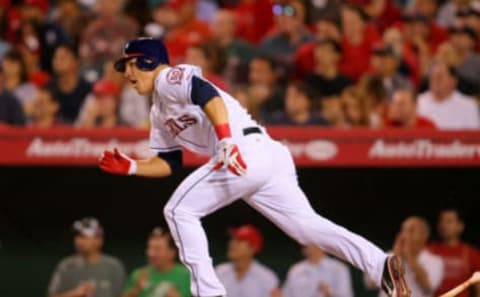
#12. Mike Trout, CF, Los Angeles Angels (picked by Jason Grey)
Age: 19, MLB: None (still in AA)
Leading up to this pick, there were plenty of comments about who should be next. A fan named Mike S. said Miguel Cabrera should have been a top 10 pick. Another fan, this one named Mark, said, “A-Gon should get some love.” A third fan mentioned Prince Fielder. Jim Bowden said Miguel Cabrera, Adrian Gonzalez and Jose Bautista were the best bats left on the board.
Jason Grey went off the beaten path by selecting a minor leaguer, Mike Trout. You may have heard of him. Grey said his pick of Trout showed he trusted the scouting grades put on Trout while he was in the minor leagues. He said, “On the [20-80 scouting] scale, Mike Trout projects to eventually be one of the best players in the game. Even though he doesn’t have an at-bat above the Double-A level and has yet to reach his 20th birthday, I’m trusting my scouting grades and making Trout my selection.”
He added, “He has game-changing speed and a bat with the potential to hit for both a high batting average and 20-plus homers to go with it. He also has the tools to be a star defender at a premium position.” Well done, Jason Grey, well done.
Szymborki described Trout as the Angels next big star and said ZiPS, “has Trout hitting .300/.380/.450 a year in his prime.” That turned out to be very conservative for Trout. A season like that would be a huge disappointment for the Mike Trout we all know and love.
A chat poll asked: “Keith Law has Bryce Harper and Mike Trout ranked 1-2 respectively as MLB prospects, who would you rather have?”
75%–Harper
25%–Trout
Five-year ZiPS projected WAR: 18.5
ZiPs 5-year actual WAR: 47.0 (Baseball-Reference)
What happened: Trout made it to the big leagues for a 40-game stint in 2011, the year of this Franchise Player Draft. It was the only time he’s spent in the major leagues in which he wasn’t among the best players in baseball. He hit .220/.281/.390. The next season he won the AL Rookie of the Year Award and was second in MVP voting. He was second in MVP voting again in 2013.
In 2014, Trout won the AL MVP Award, then finished second again in 2015 before winning it for the second time in 2016. He could have easily won five straight, but settled for two wins and three second-place finishes. The only thing preventing him from winning it last year was an injury that limited him to 114 games.
This year, Trout is better than ever, currently hitting .323/.458/.645 and leading the walks, on-base percentage and WAR (6.6 through 81 games). It goes without saying that Trout was by far the best pick of this draft. In the five years after this draft, Trout was worth 47 WAR, which is almost 12 more WAR than the second-best player taken.
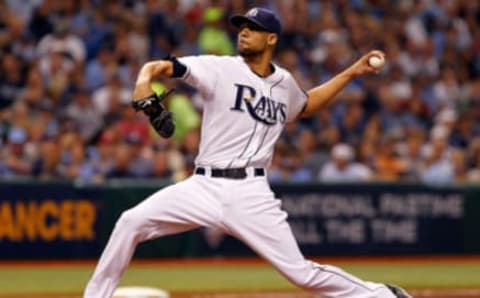
#13. David Price, LHP, Tampa Bay Rays (picked by Jim Bowden)
Age: 25, MLB: 4th season
Jim Bowden, lover of pitchers, finally got his number one starter here. He wavered between Price and Kershaw and finally went with Price, saying, “The best way to begin to build a championship-caliber club is with a starting rotation of No. 1 starters. To start a franchise with a proven, 25-year-old left-handed starter with a clean delivery and great make-up is a no-brainer.” To her credit, Amy K. Nelson did not ask if Bowden wanted to date Price. She took the high road.
As it turned out, Bowden would have been better off taking Kershaw, but Price wasn’t a bad pick. A comment from Gotbeatup agreed with this pick, saying, “Price has pitched in the tough AL East while Kershaw has had the luxury of pitching in the NL West . . . edge to Price.” Gotbeatup was wrong, but at least he had his reasons.
Dan Szymborski added that Price was a legitimate ace, just not the best pitcher in baseball. His ZiPS projection was for Price to be about a 3 WAR pitcher over the next five years.
Five-year ZiPS projected WAR: 16.5
ZiPs 5-year actual WAR: 22.9 (Baseball-Reference)
What happened: Price finished the 2011 season with a 3.49 ERA in 224.3 innings, then had his best season in 2012 when he was 20-5 with a 2.56 ERA. He led the AL in wins and ERA and won the Cy Young Award.
He was an all-star in 2014 and 2015 and finished in the top six in AL Cy Young voting each year. In 2016, his first season in Boston, he was a 3 WAR pitcher. Last year wasn’t so good because of injuries, but he’s bounced back this year to be worth 1.7 WAR as we near the halfway point. Price was the 13th player taken and provided the seventh-most value among the 30 players in this Franchise Player Draft.
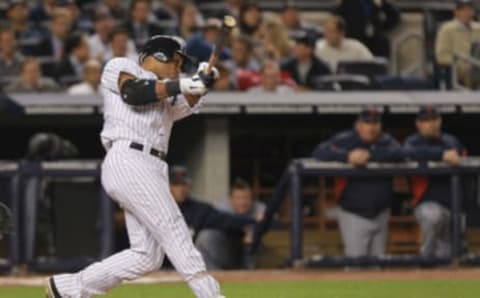
#14. Robinson Cano, 2B, New York Yankees (picked by Aaron Boone)
Age: 28, MLB: 7th season
Current Yankees manager Aaron Boone was next up. Before he made his pick, commenter Joe Nelson posted: “Price is the pick, but how is Miggy still out there, if you think Trout will impact a team more than Miggy you guys are all nuts.” No, Joe Nelson. You are the one who is nuts!
Another commenter, this one named Sam, was also a bit hung up on the Mike Trout pick. His comment: “McCutchen/Upton/CarGo > Trout.” Like Joe Nelson, Sam was wrong as wrong could be.
A comment from someone named Brett Boone said, “Surprised he did not pick me.” I’m pretty sure it wasn’t the real Bret Boone because his name was misspelled, but who knows?
Resident baseball expert Aaron Boone stepped to the podium and took Robinson Cano. He said, “Cano is a young guy, a prime middle-of-the-infield player who has developed into a Gold Glove talent.” I had to check that and was surprised to learn that Cano did, in fact, win two Gold Gloves.
Boone added, “Cano’s always hit for average—look, he’s hit better than .300 in four of his past five full seasons—but now he’s adding power. That’s a guy you can build around.” Jim Bowden said this was a solid pick for Boonie.
Szymborki’s ZiPS projection for Cano is lower than many players taken in this draft, but he did mention that Cano had a real shot at finishing with 3000 hits, which is true even with his recent PED suspension.
Fun With Math Interlude: Robinson Cano has 2417 career hits. He’s projected to have 30 more when he comes back from his suspension in mid-August. Let’s round up and give him 2450 for his career. He’s 35 years old and has five years remaining on his contract with the Mariners, so he’ll need 550 hits in five years to get to 3000. He definitely has a shot. Well done, ZiPS.
Five-year ZiPS projected WAR: 17.2
ZiPs 5-year actual WAR: 33.2 (Baseball-Reference)
What happened: Cano nearly doubled his ZiPS five-year projection. After this draft, he had his two best seasons, both worth 7 WAR. He also had two 6.2 WAR seasons. He slowed down last year when he was worth 3.4 WAR, but was on pace for a better season this year before he was hit with the PED suspension.
Now? Who knows? We’ll find out in August how Cano fares after his PED suspension. The Mariners hope he doesn’t age quickly because he’s still owed $120 million over the next five years. As far as this Franchise Player Draft is concerned Cano was one of the best picks. He was taken 14th and provided the third-most value over the ensuing five seasons.
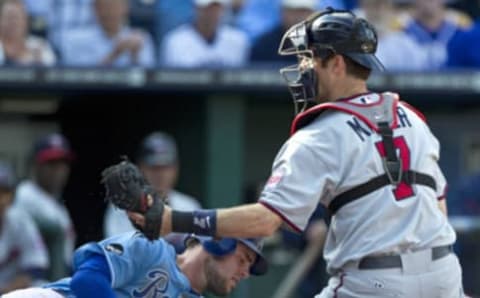
#15. Joe Mauer, C, Minnesota Twins (picked by Jim Caple)
Age: 28, MLB: 7th season
Before this pick, Jim Bowden said, “Miguel Cabrera, Adrian Gonzalez, Clayton Kershaw, Justin Verlander, Joe Mauer, Buster Posey, Stephen Strasburg, Michael Pineda, Jay Bruce, Mike Stanton, Jose Bautista, Matt Kemp . . . alot of talent left on the board . . . who else am I missing?”
Jim Caple took one of the guys mentioned by Bowden, Joe Mauer. He was excited to get, in his words, “An MVP, multi-batting champ catcher in his 20s.” He asserted that if this franchise player draft had been held the previous year, Mauer would have been among the top picks. He also said if he hadn’t taken Mauer, he would have taken Buster Posey.
Caple made his pick knowing that Mauer likely wouldn’t be an everyday catcher for much longer. Mauer missed most of the first half of the 2011 season with an injury and his days as a catcher were dwindling. Caple said, “And even if he can’t be an everyday catcher much longer, I’m thinking that a player who also was the nation’s high school player of the year at quarterback can probably shift to another position fairly easily.”
Szymborki acknowledged the concern about Mauer being moved away from catcher, but thought Mauer’s bat could play at other positions. Bowden thought this was a great pick and called Mauer the complete package. He was “looking forward to him getting healthy and being an MVP candidate again! Great pick.”
Chat poll question: “What do you think about Joe Mauer’s draft position at No. 15?”
56%–Too high
16%–Too low
28%–Just right
Five-year ZiPS projected WAR: 23.7
ZiPs 5-year actual WAR: 15.8 (Baseball-Reference)
What happened: In Mauer’s six full seasons prior to this Franchise Player Draft in 2011, he averaged 5.3 WAR per season as a catcher with a .328/.409/.478 batting line. Two seasons before this draft, he was the 2009 AL MVP when he led the league in all three triple-slash categories (.365/.444/.587) and had a career-high 28 home runs.
In the six full seasons after this draft, Mauer averaged 3.2 WAR per season. He shifted away from catcher to first base and hit .291/.377/.412. He was the 15th player taken and was the 17th-most valuable among the 30 players drafted.
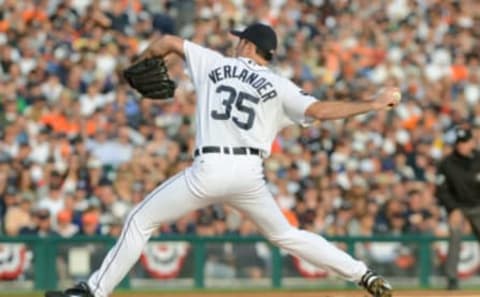
#16. Justin Verlander, RHP, Detroit Tigers (picked by Steve Berthiaume)
Age: 28, MLB: 7th season
As the Franchise Player Draft moved to the second half of the 30 picks, Steve Berthiaume chose Justin Verlander to be the ace of his fictional pitching staff. The comp put on Verlander by Berthiaume here was Roy Halladay. Berthiaume said, “Verlander’s track record shows he could be on a Roy Halladay-career path: the epitome of a staff ace for years to come. Those true No. 1 guys are hard to find. Verlander has been incredibly durable.”
Commenter Mike thought it was “a heckuva pick at 16.”
Commenter Babe Ruth quipped, “This is the second best Tiger available.”
Jim Bowden continued to push his top-of-the-rotation views on the world with, “Great pick by Steve! You win with top of the rotation starting pitching and if you draft a bat in the first round . . . you’re NOT getting one.” He called Verlander the most underrated pitcher in baseball along with Jered Weaver.
Szymborski mentioned Verlander’s durability and his ability to get strikeouts in the more difficult American League. He said, “Some say he’s the best Tiger starter since Jack Morris, but Verlander’s better.”
Five-year ZiPS projected WAR: 22.0
ZiPs 5-year actual WAR: 22.8 (Baseball-Reference)
What happened: The year this draft took place, Verlander led the AL in pretty much all the pitching categories. He was 24-5 with a 2.40 ERA and 239 strikeouts in 251 innings. He was an all-star, the AL Cy Young winner and the AL MVP. He was very good again in 2012 (2.64 ERA in 238.3 innings, second in Cy Young voting), then slipped a bit in 2013.
In 2014, after averaging 234 innings per year over the previous five years, Verlander had a 4.54 ERA in 206 innings. He hadn’t had an ERA that high since 2008. He was injured in 2015 and limited to 133.3 innings, but bounced back in 2016 and 2017.
This year, Verlander has a 1.82 ERA in 113.7 innings as we get to the season’s halfway point. He was the 16th player taken and eighth in value among these players over the next five years. Good pick, Steve!
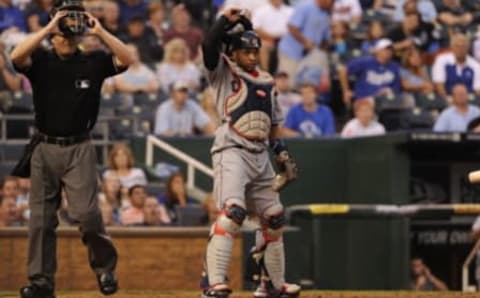
#17. Carlos Santana, C, Cleveland Indians (picked by Jason Churchill)
Age: 25, MLB: 3rd season
Before Chruchill’s pick, a commenter evinced surprise that Justin Upton hadn’t been drafted yet. He pointed out that Upton was just 23 years old and “has as much potential as anyone.”
Jason Churchill ignored the commenter and took Carlos Santana. He said he strongly considered Starlin Castro, Colby Rasmus, Mike (Giancarlo) Stanton and Buster Posey. He went with the switch-hitting catcher in Cleveland. He said, “Santana is a switch-hitting backstop with above-average defensive skills and power from both sides of the plate.”
Perhaps anticipating that Santana wouldn’t be a catcher forever, Churchill added, “His bat should play at first when it’s time to move off catcher. Santana is the type of talent that can anchor a championship roster.”
A few commenters questioned this pick over Buster Posey. Of course, Posey had been knocked out for the season with a gruesome leg injury just a couple weeks before this draft. A healthy Posey likely would have been taken long before this pick.
Five-year ZiPS projected WAR: 20.9
ZiPs 5-year actual WAR: 14.8 (Baseball-Reference)
What happened: Santana was only in his second big league season when this draft transpired. He finished the 2011 season with 4.5 WAR while splitting time between catcher and first base. He mostly played catcher in 2012 and 2013, but shifted almost exclusively to first base in 2014 and has played there ever since.
His bat would have played much better at catcher. At first base, Santana was worth about 3 WAR per year during the five years after this Franchise Player Draft. He was the 17th player taken and was 19th in value.

#18. Buster Posey, C, San Francisco Giants (picked by Christina Kahrl)
Age: 24, MLB: 2nd season
Christina Kahrl didn’t shy way from the recently-injured Posey. She said she went with a straightforward checklist, “Is he an up-the-middle player? Will he still be one in six years? Is he already an established hitter with upside? Can he produce from the middle of the lineup? Posey has all of these things going for him. Plus, I expect a full recovery form his leg fracture, so picking Posey reflects confidence in that, and in his value to my ‘franchise.’”
Commenter Snap Wilson said, simply, “Great choice.”
Chat poll question: “How much would Buster Posey’s season-ending leg injury impact your decision to draft him as a franchise player?”
14%–No impact
35%–Little impact
37%–Moderate impact
14%–Significant impact
Karhl must have been in the “No impact” or “Little impact” crowd. She took the risk on the injured catcher and had one of the better picks in the entire draft.
Szymborski pointed out that Posey had the “fourth-best ZiPS projection of any of the players listed here.” He also pointed out that Posey’s bat was good enough to play elsewhere.
Five-year ZiPS projected WAR: 26.6
ZiPs 5-year actual WAR: 29.2 (Baseball-Reference)
What happened: Like Snap Wilson said, this was a great choice. Posey was the 18th player taken but had the fourth-most value of the drafted players. He recovered from his leg injury to play an average of 148 games per year over the next five years and was nearly a 6 WAR player over that time.
He also had four all-star seasons and won two World Series titles and an MVP Award. This year, he’s not hitting for as much power as he had previously, but has still been a 2 WAR player through roughly half a season.
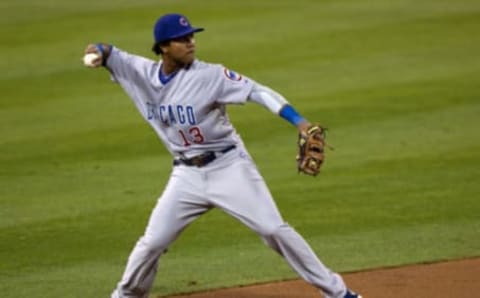
#19. Starlin Castro, SS, Chicago Cubs (picked by Jerry Crasnick)
Age: 21, MLB: 2nd season
There were plenty of big bats still available, but Jerry Crasnick went with the young shortstop on the Cubs, Starlin Castro. Despite mentioning that Castro needs to work on his concentration, plate discipline and defensive consistency, Crasnick took him with the 19th pick anyway. He liked Castro’s youth and tools.
Crasnick, on his pick, “I talked to one person who called his plate coverage remarkable, compared him to Vladimir Guerrero for his ability to hit balls out of the strike zone with authority, and predicted he’ll win a batting title one day.” [He didn’t.]
He added, “Great catchers and shortstops are so rare, you grab them when you can. Castro has so much promise over the long haul, there’s no way I could pass him up in the 19th spot.”
One commenter immediately questioned this pick over fellow shortstops Hanley Ramirez and Jose Reyes. That seemed to be the consensus. Ramirez and Reyes had been mentioned earlier in the draft. It’s likely that most people expected one or both of them to go before Castro was taken. Szymborki’s ZiPS projection was a modest 16.6, but Dan was intrigued by his upside.
Five-year ZiPS projected WAR: 16.6
ZiPs 5-year actual WAR: 7.3 (Baseball-Reference)
What happened: Starlin Castro is one of those players who is more sizzle than steak. He often seems like he should be a top player but he never actually is a top player. At the time of this Franchise Player Draft, he was about to be an all-star and would lead the NL in hits. This was one of his two seasons with more than 3 WAR.
In the five years after this draft, Castro was worth just 7.3 WAR. He was above average twice, between replacement-level and average twice, and below replacement-level once. He was the 19th player taken and finished 25th in WAR among the 30 players drafted.
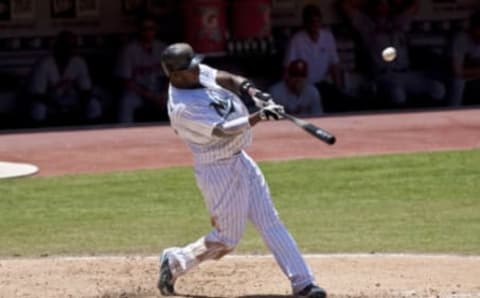
#20. Hanley Ramirez, SS, Florida Marlins (picked by Matt Meyers)
Age: 28, MLB: 7th season
Perhaps the Castro pick influenced Matt Meyers to take another shortstop here. He went with Hanley Ramirez. He said wasn’t interested in taking a pitcher, too much risk, so his plan was to take the best available up-the-middle guy. At this point, he felt it was Han-Ram. He even said he would have considered Ramirez at number one overall, ahead of Tulowitzki because Ramirez had a longer track record of success.
More from Meyers: “Sure, he’s off to a slow start, but he hit .319/.394/.532 from 2007 through 2010 with an average of 27 homers and 32 steals. I’m sure he’ll be back on the Hall of Fame track any day now and provide elite production well into his 30s.”
One commenter rejoiced, saying, “Finally!!!” Another commenter said Meyers was obviously not worried about team chemistry. This was a good example of the back-and-forth of online commenting.
Szymborski chimed in with his agreement about the strong-hitting shortstop, while acknowledging that Ramirez was having a down season. He said, “…he’s also a 27-year-old shortstop who entered the season with a Hall of Fame-esque .313/.385/.520 line. Unless he forgot how to hit, which strikes me as unlikely, he should continue to be a starter for the next decade even with a position change.”
Five-year ZiPS projected WAR: 24.2
ZiPs 5-year actual WAR: 11.8 (Baseball-Reference)
What happened: Hanley Ramirez was a very good player in his first five full seasons. Through his age-26 season, he was a .313/.385/.520 hitter. Then came this 2011 season when he was worth just 0.2 WAR. He wasn’t very good in 2012 either (1.3 WAR). That season was split between the Marlins and Dodgers.
Like a villain in a horror movie, Hanley Ramirez came back from the dead in 2013, when he was worth 5.4 WAR in just 86 games. He kept the feeling alive with a 3.6 WAR season in 2014.
Then came the Boston years. The 2015 season was the worst of Hanley’s career. He hit .249/.291/.426 in 105 games and was worth -1.3 WAR. Time to put the nail in the coffin, right?
Nope. Hanley “Freddy Krueger” Ramirez came back again to be worth 2.8 WAR in 2016. Now, two year later, it’s possible that season was his last hurrah. He was worth -0.3 WAR last year and worth 0.2 WAR this year in 44 games. The Red Sox released him a month ago.
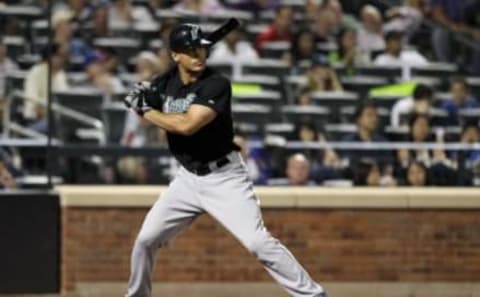
#21. Mike (now Giancarlo) Stanton, RF, Florida Marlins (picked by Mark Mulder)
Age: 21, MLB: 2nd season
In the time between the Hanley Ramirez pick and this pick, there were plenty of comments from people wondering why Miguel Cabrera hadn’t been taken yet. To put this draft in context, this was just a few months after Cabrera’s DUI incident, which likely dampened his perceived value. He would end up leading the league in batting average and on-base percentage the year of this Franchise Player Draft.
The next resident baseball expert on the clock was Mark Mulder, the fourth former MLB player to make his pick. He went with Mike Stanton (before he became Giancarlo). Mulder liked the middle-of-the-order guy “who has all the tools you look for in a player.” He wanted Stanton while his prime years were still ahead of him with the thought that he could anchor the lineup for the next 10 years.
The comment right after this pick was a shocked, “Mike Stanton over Justin Upton!!!!” That’s four exclamation points for those scoring at home. Of course, that comment was followed by a “nice pick!!!!” (an equally excited four exclamation points) and “awesome pick of Mike Stanton!” (just one exclamation point).
Szymborski’s ZiPS didn’t have the highest projection for Stanton, but Dan commented that the big man is as good a bet as any young player can be to finish with 500 career home runs [he’s more than halfway there now]. The guy who picked Trout, Jason Grey, cited Stanton’s 80 grade power on the 20-to-80 scouting scale. He loved this pick and said Stanton was on his short list when he took Trout.
Five-year ZiPS projected WAR: 18.5
ZiPs 5-year actual WAR: 20.7 (Baseball-Reference)
What happened: Stanton finished the 2011 season with 150 games played. Then he didn’t reach that total in any season over the next five. Despite playing an average of just 115 games per year, he averaged 4.1 WAR per year during the five years after this draft. He also flashed glimpses of what he could be with a 5.4 WAR season in 2012 and a 6.5 WAR season in 2014.
Last year was the year everyone was hoping for. He led the NL in home runs (59) and RBI (132) and won the MVP Award with 7.6 WAR. This was a good pick by Mulder. Stanton was taken 21st in this draft and finished 11th in value over the ensuing five seasons.
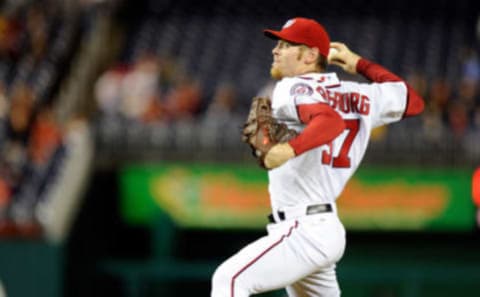
#22. Stephen Strasburg, RHP, Washington Nationals (Kevin Goldstein)
Age: 22, MLB: 1st season
The Miguel Cabrera love continued in the comments. One person noted, “Every pick that has not been Miguel Cabrera has been a pick that was picked too high.” Jerry Crasnick responded to that comment by pointing out that Cabrera’s off-field issues scared some people off.
The next expert was Kevin Goldstein. He took Stephen Strasburg and commented that if this draft had been held a year earlier, before Strasburg’s Tommy John surgery, he would have been in the mix for first overall pick. He chose to take the risk with “one of the best, if not the best, pitching prospects of our generation.”
Goldstein added, “…the rewards of potentially the best pitcher in the draft with the 22nd overall pick far outstrip any possible down scenarios for me.” Strasburg had pitched 68 innings (2.91 ERA) in 2010 and would come back in September of 2011 to pitch another 24 innings (1.50 ERA).
Symborski pointed out that Strasburg was the riskiest player drafted so far because of the Tommy John surgery, but “a healthy Strasburg should crush the above projection.” Jim Caple was not impressed, calling Strasburg overrated and saying he liked Michael Pineda more.
Chat poll: “What do you think about Stephen Strasburg at draft position No. 22?”
22%–Too low
41%–Too high
37%–Just right
Five-year ZiPS projected WAR: 13.8
ZiPs 5-year actual WAR: 15.0 (Baseball-Reference)
What happened: Strasburg didn’t exactly crush his projection, but he was a bit better than projected. He was generally a 3 to 3.5 WAR pitcher over the next five years while averaging 166 innings per year with a 3.24 ERA. The low innings total has always been the issue with Strasburg. He’s only had one season with more than 200 innings.
Last year was his best year. He pitched 175. 3 innings with a 2.52 ERA and was worth 6.2 WAR. This year, he’s back to the 3-ish WAR guy he’s generally been over the years. In this draft, he was taken 22nd and provided the 18th-most value of the players taken.

#23. Neftali Feliz, RP, Texas Rangers (picked by Rick Sutcliffe)
Age: 23, MLB: 3rd season
Another former MLB player steps up to make his pick. It’s Rick Sutcliffe, the 1984 NL Cy Young Award winner. For his franchise player, he chose Neftali Feliz, who had won the AL Rookie of the Year Award the previous season. Yep, with Miguel Cabrera, Andrew McCutchen and many other great bats and arms still available, Rick Sutcliffe chose Neftali Feliz as the guy he wanted to build his franchise around.
Sutcliffe liked Feliz at least in part because “he’s shown he will do what’s best and what’s right for the team.” This was back when Feliz had come through the minor leagues as a starting pitcher but flipped to the bullpen in the bigs. Sutcliffe expected him to go back to starting the following season and throw 175 to 200 innings. He also compared him to a healthy Josh Beckett.
Szymborski, channeling ZiPS, said Feliz would likely not convert back to the starting rotation but added, “Feliz is the right pick for the first reliever off the board.” In hindsight, Craig Kimbrel would disagree.
Comment from Bo Jackson (or some joker claiming to be Bo Jackson): “If this was ’85 I would be #1.” Of course, if this were a Tecmo Bowl Franchise Player Draft, Bo Jackson would also be #1.
Five-year ZiPS projected WAR: 12.6
ZiPs 5-year actual WAR: 2.9 (Baseball-Reference)
What happened: Feliz finished the 2011 season with 32 saves. That was the last time he had more than 15 in a season. Also, he was limited to just 79 innings over the three seasons after this Franchise Player Draft. Then he had a 6.38 ERA in 48 innings in 2015. He bounced back with a solid season for a reliever in 2016, but stunk up the joint last year and hasn’t pitched in the major leagues this year.
If a Franchise Player Draft were held in 2018, it’s hard to imagine anyone taking a reliever to build a franchise around. Feliz was the 23rd pick in this draft. He wasn’t the worst pick because he did provide 2.9 WAR over the ensuing five seasons, but he was one of the worst picks (27th in value among these players).
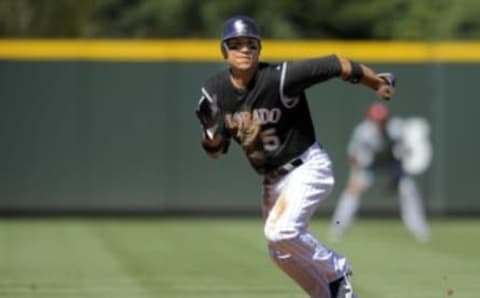
#24. Carlos Gonzalez, LF, Colorado Rockies (picked by Jayson Stark)
Age: 25, MLB: 4th season
Jayson Stark considered Michael Pineda with this pick, along with Clayton Kershaw and Miguel Cabrera. He chose not to take a pitcher because “they all get hurt.” He also wanted a player younger than Cabrera, so Gonzalez was the pick.
Stark: “He’s still only 25 and already one of the great players in this sport. And anybody with a nickname as great as CarGo was my kind of franchise player.”
Szymborski chimed in with, “Gonzalez has all the tools, only missing a bit of plate discipline, and could still likely play center field in a pinch.”
Jonah Keri liked this pick also, but was very surprised that Miguel Cabrera hadn’t been taken yet. A commenter named Rhys wasn’t so high on this pick. He claimed Matt Kemp was better than Carlos Gonzalez.
One commenter was shocked that Jose Bautista hadn’t been picked yet, considering he had out-homered everyone in baseball by a significant margin going back September of 2009. Of course, Bautista was a bit long in the tooth for this crowd.
Five-year ZiPS projected WAR: 18.0
ZiPs 5-year actual WAR: 11.5 (Baseball-Reference)
What happened: Gonzalez finished the 2011 season with 4.3 WAR. He was worth 5.9 WAR the previous year. In the five seasons after this Franchise Player Draft, Gonzalez had a 5.1 WAR season, a 3.1 WAR season, and a 2.4 WAR season. The other two years were below average, with one being below replacement-level (2014). Overall, Cargo was the 24th player taken and finished 23rd in value among these 30 players over the ensuing five seasons.
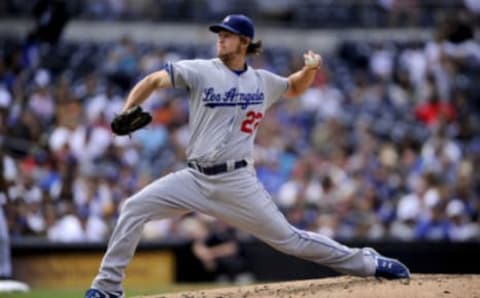
#25. Clayton Kershaw, LHP, Los Angeles Dodgers (picked by Tim Kurkjian)
Age: 23, MLB: 4th season
Heading into this pick, six pitchers had been taken, including a reliever. None of them would come close to the value of Tim Kurkjian’s pick here, Clayton Kershaw.
Kurkjian on his pick, “With the emphasis today on pitching, every team needs an ace around which to build, and there aren’t many better young pitchers than Kershaw, a lefty who’s only 23.” He mentioned Kershaw’s mid-90s fastball and great curveball, along with how wildly competitive Kershaw was. He must have seen Kershaw play ping-pong.
Tristan H. Cockcroft and Jonah Keri both gave good marks for this pick. Szymborski added, “For a 23-year-old with a 3.09 career ERA playing in a big market, Kershaw doesn’t get a lot of attention.” His ZiPS projection for Kershaw was 13th of the 28 players with projections during this draft.
Fans following along in the chat liked Kershaw, but not as much as they liked David Price. This chat poll was put out there: “Which left-handed ace would you rather have as your franchise player?”
32%–Clayton Kershaw
28%–Jon Lester
34%–David Price
6%–Other
Five-year ZiPS projected WAR: 22.8
ZiPs 5-year actual WAR: 35.4 (Baseball-Reference)
What happened: Kershaw won the NL Cy Young Award the season this Franchise Player Draft was held. Then he finished second the next season before winning it again in 2013 and 2014. In the five years after this draft, he had a 2.02 ERA while averaging 209 innings per season. Three times he had an ERA under 2.00. He also had a season with 301 strikeouts. Simply put, he was amazing.
Twenty-four resident baseball experts bypassed Clayton Kershaw. Twenty-three of them should not have done so. Among these 30 players, only Mike Trout was better over the ensuing five years than Kershaw.
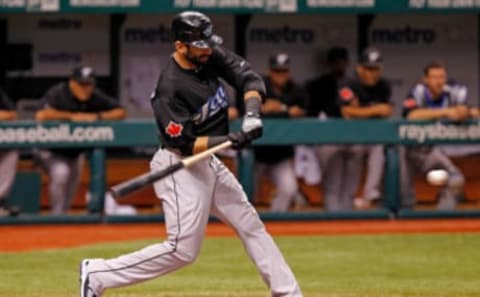
#26. Jose Bautista, RF, Toronto Blue Jays (picked by Jonah Keri)
Age: 30, MLB: 8th season
Leading up to his pick, Jonah Keri mentioned the many good choices still available, including Miguel Cabrera, Adrian Gonzalez, Kevin Youkilis, Dustin Pedroia, and Matt Kemp. He chose Jose Bautista.
To put this pick in context, let’s remember who Jose Bautista was before he became JOSE BAUTISTA! From 2004 to 2009, he hit .238/.329/.400 while playing for five different teams. The last of those teams was the Toronto Blue Jays. Jose Bautista had a good September in 2009.
Then came 2010, when Bautista hit .260/.378/.617 and led the AL with 54 home runs. This Franchise Player Draft was in June of 2011 and Bautista was hitting just as good as he had in 2010. He would go on to lead the AL in homers, walks and slugging percentage and finish third in MVP voting.
Commenting on his pick here, Keri didn’t mention at all that Bautista plays for a Canadian team, so maybe that didn’t factor into his decision. He did mention that Bautista is a possible 50, maybe 60, home run guy with a high on-base percentage who could have a “Bondsian” stretch in his 30s.
He added, “If you’re a skeptic who thinks Bautista can’t keep it up, or worries that 30 is too old for a franchise layer, you draft him, then flip him to a team that will send you a king’s ransom in younger talent. Win-win.”
Chat poll: “Do you believe Jose Bautista’s production over the last two seasons has made him worthy of being a franchise player?”
58%–Yes
42%–No
The majority of poll respondents agreed that Bautista had done enough to be a franchise player, but there were commenters who were shocked that Bautista went before Miguel Cabrera. This spurred another chat poll: “Which player would you rather have as your franchise player?”
33%–Jose Bautista
67%–Miguel Cabrera
The fans liked Bautista, but they liked Cabrera more. Dan Szymborski’s ZiPS gave Bautista the highest projection of any player chosen. Dan added, “Jose Bautista, Superstar, still seems a little strange, but that’s were we are.”
Five-year ZiPS projected WAR: 29.9
ZiPs 5-year actual WAR: 20.7 (Baseball-Reference)
What happened: As it turned out, Bautista was in the midst of his best season when this draft was held. He would never again be an 8 WAR player like he was in 2011. He still had some good years, though. From 2012 to 2016, he was worth 20.7 WAR, which put him 12th among these 30 players drafted.

#27. Michael Pineda, RHP, Seattle Mariners (picked by Buster Olney)
Age: 22, MLB: 1st season
With four picks remaining in this Franchise Player Draft, Buster Olney is on the clock. He takes young right-handed pitcher Michael Pineda, who was having a good rookie season for the Seattle Mariners. Olney was very high on Pineda because of his “freakish talent” as a big, young pitcher who “can hammer the strike zone.”
He added, “They’re going to be tough to contend with, with he and Felix [Hernandez]. I can’t get Felix; I’ll take Pineda with the 27th pick.”
A commenter agreed that it was about time to take Pineda, while another commenter wondered why Pineda would go before Roy Halladay. Tristan Cockcroft posted, “Darn. Severely disappointed Pineda didn’t last two more picks… sigh.”
Syzmborski pointed out that ZiPS thought Pineda was ready to be a league average big league pitcher at just 21 years old and Pineda was exceeding those expectations.
Five-year ZiPS projected WAR: 17.6
ZiPs 5-year actual WAR: 5.7 (Baseball-Reference)
What happened: Pineda finished up his rookie year with a fifth-place finish in the AL Rookie of the Year voting. He had a 3.74 ERA in 171 innings. Then he missed the next two seasons with injuries. He got back on the mound, now with the New York Yankees, for 76.3 innings with a 1.89 ERA in 2014 and it looked like his career was back on track.
In 2015, Pineda had a 4.37 ERA in 160.7 innings. His FIP was much better, at 3.34, but a high BABIP and low left on base percentage hurt him. The 2016 season was similar to 2015. Pineda had a 4.82 ERA and 3.80 FIP. Last year, Pineda only made 17 starts and had a 4.39 ERA. He hasn’t pitched in the big leagues this season. Overall, Pineda was the 27th player taken and was 26th in value among the players drafted over the ensuing five years.
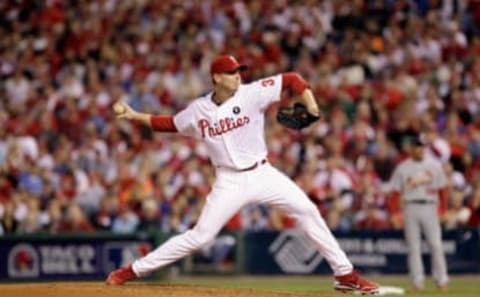
#28. Roy Halladay, RHP, Philadelphia Phillies (Barry Larkin)
Age: 34, MLB: 14th season
The sixth of the seven former MLB players to participate in this Franchise Player Draft was Barry Larkin. Like so many others, he ignored the Miguel Cabrera-sized elephant in the room and passed on Miguel Cabrera. He took 34-year-old Roy Halladay, who was the oldest player drafted.
The year this draft was held, Halladay had a long history of pitching excellence. Over the previous five seasons, Halladay had averaged 236 innings per year with a 2.96 ERA. He was an all-star four of those five seasons and had five top-5 finishes in Cy Young voting. He won the award in 2010 and would finish second in 2011.
Still, he was 34 years old and this was a draft for the player you want to build your franchise around. Larkin acknowledged Halladay’s age but said, “… his work ethic is going to keep him going for more years, so that productivity, that toughness to keep pitching and getting innings, is going to be there.” Larkin also commented that Halladay’s work ethic would be good for the rest of the rotation to learn from.
A comment from Guest was surprised, saying, “I’m the biggest Halladay fan but..c’mon. How bout Hamels at 27 yrs old?” Another commenter named Batboy disagreed, saying Halladay should have been taken earlier. To borrow from Isaac Newton’s third law, when reading the comments online, be aware that for every take, there’s an opposite and equal opposing take.
ZiPS had a projection for Halladay of 22.8 WAR over the next five years. Szymborski commented on Halladay’s age, saying the only reason he was taken this late is because he’s so much older than the other pitchers taken. He added that Halladay was looking like a Hall of Famer sometime around 2025 barring a “spectacular collapse.”
Five-year ZiPS projected WAR: 22.8
ZiPs 5-year actual WAR: -0.3 (Baseball-Reference)
What happened: A spectacular collapsed happened. Halladay went from a 2.35 ERA (2.20 FIP) in 2011 to a 4.49 ERA (3.69 FIP) in 2012 and a 6.82 ERA (6.14 FIP) in 2014. That was it. At 36 years old, Halladay was done. He was worth negative WAR over his final two seasons. He still wasn’t as bad as Lincecum, but he was bad, the second-worst pick in this draft.

#29. Justin Upton, RF, Arizona Diamondbacks (picked by Tristan H. Cockcroft)
Age: 23, MLB: 5th season
Before Tristan H. Cockcroft made his pick, there were plenty of suggestions in the comments. One guy pushed for Miguel Cabrera. Another suggested Jay Bruce. A third advised Cockcroft to take Eric Hosmer because he was a “5 tool player.” Curtis Granderson, Ryan Zimmerman and Justin Upton were mentioned.
With the penultimate pick of the draft, Cockcroft took 23-year-old Justin Upton. He said, “Upton already has a 20/20 season and an .899 OPS as a 21-year-old; in the past quarter-century only four players managed a higher OPS at 21 or younger: Alex Rodriguez, Albert Pujols, Ken Griffey, Jr. and Mike Stanton. The best case: I’ve landed an underpriced franchise player. The worst? I’ve got an above-average-to-All-Star-caliber regular for a decade-plus.”
The first response after Cockcroft’s pick was from a commenter using the name Miguel Cabrera. It was simply, “Tristan . . . you break my heart.” Cockcroft acknowledged that Cabrera was in the mix for this pick, along with Adrian Gonzalez and Jay Bruce.
Jonah Keri loved the Upton Pick, as did Jerry Crasnick and Doug Glanville. ZiPS had Upton projected for 18.5 WAR over the next five years, which was 19th among the 28 players with a ZiPS projection. Dan Szymborski said, “Upton’s not going to be the hitter that Votto is, but he’ll hit .270/.360/.500 for a decade and occasionally threaten as an MVP contender.”
Five-year ZiPS projected WAR: 18.5
ZiPs 5-year actual WAR: 14.3 (Baseball-Reference)
What happened: Szymborski’s comment that Upton would be a .270/.360/.500 hitter for the next decade was a little off the mark. Upton was a .262/.339/.461 hitter in the five years after this draft. He averaged 2.9 WAR per season and made one all-star team in those five years.
Upton had the second-best season of his career the year this Franchise Player Draft was held. He hit .289/.369/.529, was worth 5.5 WAR, made the all-star team and finished fourth in NL MVP voting. He topped that last year with a 5.7 WAR season, but has generally been in the 2 to 3 WAR range. In this draft, he was the 29th player taken and finished 21st in WAR among the drafted players over the ensuing five years.
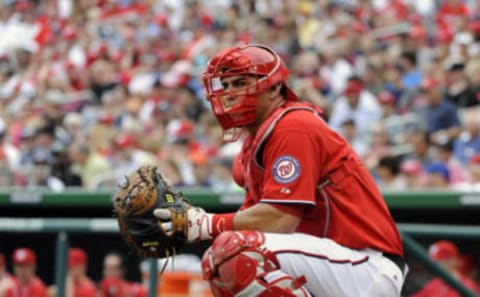
#30. Wilson Ramos, C, Washington Nationals (picked by Doug Glanville)
Age: 23, MLB: 2nd season
The final resident baseball expert, former MLB outfielder Doug Glanville, was on the clock. He had plenty of advice in the draft chat room. There was a Cole Hamels suggestion and a Jay Bruce suggestion. A commenter named Tom said, “Macho Man Machado time!” There was one last plea for Miguel Cabrera.
Glanville ignored them all and took Wilson Ramos, who was a 23-year-old catcher in his second big league season. That’s not a typo, he really did take Wilson Ramos as his franchise player.
This pick was a bit of a shocker. Jonah Keri said, “Bold pick, Mr. Glanville!” Bold pick indeed, Mr. Glanville. Ramos had less than 300 career plate appearances at this point of his career.
One commenter said, plainly, “I don’t like that pick Doug.” A Brian McCann fan felt slighted. Another said Ramos wouldn’t make his top 230, let alone the top 30. My favorite comment came from someone using the name Wilson Ramos mother: “I wouldn’t even draft my son.”
Glanville had his reasons for taking Ramos, though. He said in his comment that pitching was hugely important at the time and a young catcher who can call a game would be a valuable franchise guy. He mentioned Ramos’ caught-stealing percentage and said, “Oh, by the way, he is going to hit too.” His alternates were Eric Hosmer and Brandon Belt. He liked the idea of building a pitching staff around a good, young catcher, so he took Ramos.
Szymborski’s ZiPS projection for Ramos was the lowest of any pick a projection was provided for, but Dan said in his comment, “Ramos is unlikely to be a mega-star, but he handles all the tasks of catching well and ZiPS likes him to be a .280/.320/.430 hitter, solid numbers for a catcher, for a long time.”
Five-year ZiPS projected WAR: 11.1
ZiPs 5-year actual WAR: 8.1 (Baseball-Reference)
What happened: Ramos wasn’t that far off the .280/.320/.430 predicted by Szymborski in his comment about this pick. Ramos hit .269/.308/.427 over the next five years. He was only worth 8.1 WAR because he averaged only 90 games per year. He did have a 2.5 WAR season in 2013 and a 3.2 WAR season in 2016.
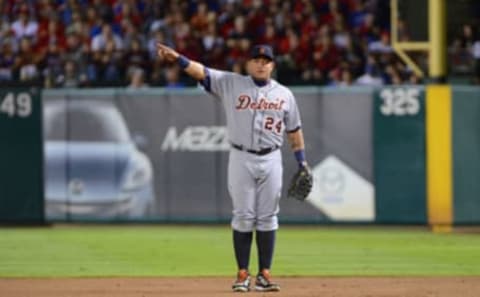
Most Mentioned Draft Snubs
Here is the full draft with the resident baseball expert who made the pick and the WAR and WAR ranking over the ensuing five seasons for that player.
- SS Troy Tulowitzki (Karl Ravech), 17.4 WAR, 15th
- 3B Evan Longoria (Keith Law), 19.2 WAR, 13th
- SP Felix Hernandez (David Schoenfiled), 22.9 WAR, 6th
- 1B Joey Votto (Dave Cameron), 33.3 WAR, 5th
- SP Tim Lincecum (Amy K. Nelson), -4.3 WAR, 30th
- SP Josh Johnson (Chris Singleton), 2.4 WAR, 28th
- OF Jason Heyward (Jorge Arangure, Jr.), 22.7 WAR, 9th
- 1B Albert Pujols (Enrique Rojas), 14.6 WAR, 20th
- OF Bryce Harper (Eric Karabell), 21.5 WAR, 10th
- OF Ryan Braun (Mark Simon), 17.9 WAR, 14th
- SP Jon Lester (Orel Hershiser), 16.3 WAR, 16th
- OF Mike Trout (Jason Grey), 47.0 WAR, 1st
- SP David Price (Jim Bowden), 22.9 WAR, 7th
- 2B Robinson Cano (Aaron Boone), 33.2 WAR, 3rd
- C Joe Mauer (Jim Caple), 15.8 WAR, 17th
- SP Justin Verlander (Steve Berthiaume), 22.8 WAR, 8th
- C Carlos Santana (Jason Churchill), 14.8 WAR, 19th
- C Buster Posey (Christina Kahrl), 29.2 WAR, 4th
- SS Starlin Castro (Jerry Crasnick), 7.3 WAR, 25th
- SS Hanley Ramirez (Matt Meyers), 11.8 WAR, 22nd
- OF Mike Stanton (Mark Mulder), 20.9 WAR, 11th
- SP Stephen Strasburg (Kevin Goldstein), 15.0 WAR, 18th
- RP Neftali Feliz (Rick Sutcliffe), 2.9 WAR, 27th
- OF Carlos Gonzalez (Jayson Stark), 11.5 WAR, 23rd
- SP Clayton Kershaw (Tim Kurkjian), 35.4 WAR, 2nd
- OF Jose Bautista (Jonah Keri), 20.7 WAR, 12th
- SP Michael Pineda (Buster Olney), 5.7 WAR, 26th
- SP Roy Halladay (Barry Larkin), -0.3 WAR, 29th
- OF Justin Upton (Tristan H. Cockcroft), 14.3 WAR, 21st
- C Wilson Ramos (Doug Glanville), 8.1 WAR, 24th
Of the 30 players who were drafted, 28 had five-year projections from ZiPS. These 28 players had an average projection of 21.4 WAR and were worth 17.0 WAR over the ensuing five years. The biggest overachievers were Mike Trout (+28.5 WAR), Robinson Cano (+16.0 WAR) and Clayton Kershaw (+12.6 WAR). The biggest underachievers were Tim Lincecum (-30.3 WAR), Roy Halladay (-23.1 WAR) and Josh Johnson (-18.2 WAR).
David Kull posted the distribution of the 30 players taken in the Franchise Player Draft. The Florida Marlins and Washington Nationals had the most players taken, with three each. Colorado, San Francisco, Seattle and Tampa Bay each had two players taken. Eight teams—the Pirates, Mets, Royals, A’s, White Sox, Padres, Orioles and Astros—had no players drafted.
The position breakdown:
Pitchers—11 (8 RHP, 3 LHP)
Infielders—7 (2 1B, 1 2B, 3 SS, 1 3B)
Outfielders—8
Catchers—4
At 18 years old, Bryce Harper was the youngest player taken. Roy Halladay, at 34 years old, was the oldest.
With the round complete, many of the participants were itching to do a second round because there was plenty of talent still available. Instead, a chat poll went up asking about the biggest snub.
Chat poll: “Which player was the biggest snub in the Franchise Player Draft?”
49%–Miguel Cabrera
17%–Adrian Gonzalez
10%–Ryan Zimmerman
9%–Matt Kemp
7%–Jay Bruce
7%–Andrew McCutchen
Regarding the “biggest snubs” poll, Cockcroft was surprised so many people favored Miguel Cabrera over Adrian Gonzalez. He said he thought Gonzalez was a more complete player and said he would take Gonzalez, given the choice.
There were no five-year projected WAR from ZiPS for these guys, but here are there actual WAR totals for the five years after this Franchise Player Draft:
49%–Miguel Cabrera—29.5 WAR
17%–Adrian Gonzalez—17.4 WAR
10%–Ryan Zimmerman—7.7 WAR
9%–Matt Kemp—5.3 WAR
7%–Jay Bruce—7.6 WAR
7%–Andrew McCutchen—25.3 WAR
Miguel Cabrera was mentioned by many commenters along the way. It turned out, they were right. He should have been taken. In fact, Cabrera would have been fourth in post-draft WAR over the five years after this draft. Andrew McCutchen was another big snub. He would have been seventh.
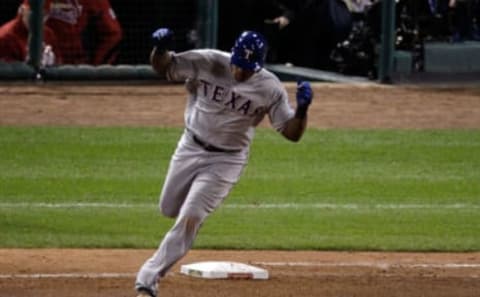
Best Players Not Mentioned
Miguel Cabrera and Andrew McCutchen were the two biggest snubs who were mentioned by commenters during the draft. There were also some snubs who either weren’t mentioned at all or were hardly mentioned who would have been excellent choices for this Franchise Player Draft.
Josh Donaldson would have been a great pick. He had 32.8 WAR in the five seasons after the draft. Of course, the Josh Donaldson who had four straight seasons with more than 7 WAR wasn’t on anyone’s radar in June of 2011. He had played 14 big league games in 2010, but was back in Triple-A in 2011 and wasn’t that impressive, hitting .264/.341/.436. He didn’t break out until 2013, two years after this draft.
Adrian Beltre was 32 years old in 2011, which is likely the main reason he wasn’t chosen. There were only three players taken who were 30 or older—Jose Bautista (30), Albert Pujols (31) and Roy Halladay (34). Beltre ended up being better than all of them. Across the five years post-draft, Beltre was worth 31.9 WAR, which would have ranked him in the top five among the players drafted, the oft-mentioned snubs and the hardly-mentioned snubs.
When this draft was held, Max Scherzer was in his fourth major league season. At the end of the year, he had a 3.92 ERA in 617 career innings. Two years later, he was an all-star and won the first of three Cy Young Awards. He was worth 29.7 WAR in the five years post-draft, which would have made him a better pick than every pitcher drafted except for Clayton Kershaw.
Bryce Harper and Mike Trout were the only two minor league players taken in this franchise player draft. There was a third minor leaguer out there who would have been a good choice—Paul Goldschmidt. Goldy had not yet played a major league game when this draft was held, but he was tearing up Triple-A. He hit .306/.435/.626 in 103 Triple-A games in 2011, then hit .250/.333/.474 in 48 major league games over the last two months of the season. In the five years after this draft, Goldschmidt was worth 28.5 WAR, which was more than the two first basemen who were taken (Joey Votto and Albert Pujols).
We’ll wrap this up with one final non-drafted player. Chris Sale was a 22-year-old left-handed pitcher in the Chicago White Sox bullpen when this draft was held. He had good numbers, but there was also concern that his arm wouldn’t hold up because of his pitching mechanics. So far, he’s held up fine. He started a run of all-star seasons the year after this draft that will likely run to seven straight this year. In the five years post-draft, he was worth 26.7 WAR, which was more than every pitcher except Clayton Kershaw and fellow snub Max Scherzer.
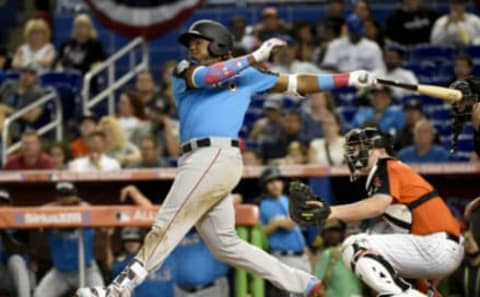
Imagining a MLB Franchise Draft in 2018
It would be fun to gather another 30 baseball experts to hold a Franchise Player Draft in 2018. Using the same rules, who would be the 30 players chosen? Who would be the oldest and youngest? Would 11 pitchers be drafted?
Hypothetically, we can start with the current best players in baseball. The 2018 position player leaders in Baseball-Reference WAR are: Mike Trout, Jose Ramirez, Francisco Lindor, Mookie Betts, and Aaron Judge. All are 26 or younger, so all would likely be among the 30 players drafted.
More from Call to the Pen
- Philadelphia Phillies, ready for a stretch run, bomb St. Louis Cardinals
- Philadelphia Phillies: The 4 players on the franchise’s Mount Rushmore
- Boston Red Sox fans should be upset over Mookie Betts’ comment
- Analyzing the Boston Red Sox trade for Dave Henderson and Spike Owen
- 2023 MLB postseason likely to have a strange look without Yankees, Red Sox, Cardinals
Next on the position player WAR leaderboard is Jose Altuve, who’s 28 years old. Is that too old for a franchise player pick? As a second baseman, is he too risky? Whether true or not, there’s a belief that second basemen experience a decline earlier than some other positions. Altuve might not make the cut.
How about the pitchers? The leaders in Baseball-Reference WAR are Jacob deGrom, Luis Severino, Max Scherzer, Chris Sale, Aaron Nola and Corey Kluber. Scherzer, Kluber and deGrom are all 30 or older. That might bump them from consideration. Sale is 29 years old, so he might be on the bubble. Severino and Nola are 24 and 25. They’d likely be good candidates.
How about the very young players? Juan Soto? Ronald Acuna? Ozzie Albies? Gleyber Torres? They are all 21 or younger and more than holding their own at the big league level. Cody Bellinger is only 22 years old and Carlos Correa is 23.
As the established players and top young players get drafted, would a resident baseball expert take a chance on Vladimir Guerero, Jr., Eloy Jimenez, Fernando Tatis, Jr., Nick Senzel or Victor Robles? It would be interesting to find out. Personally, I can’t imagine anyone could bypass Mike Trout with the first overall pick, but maybe someone out there would.